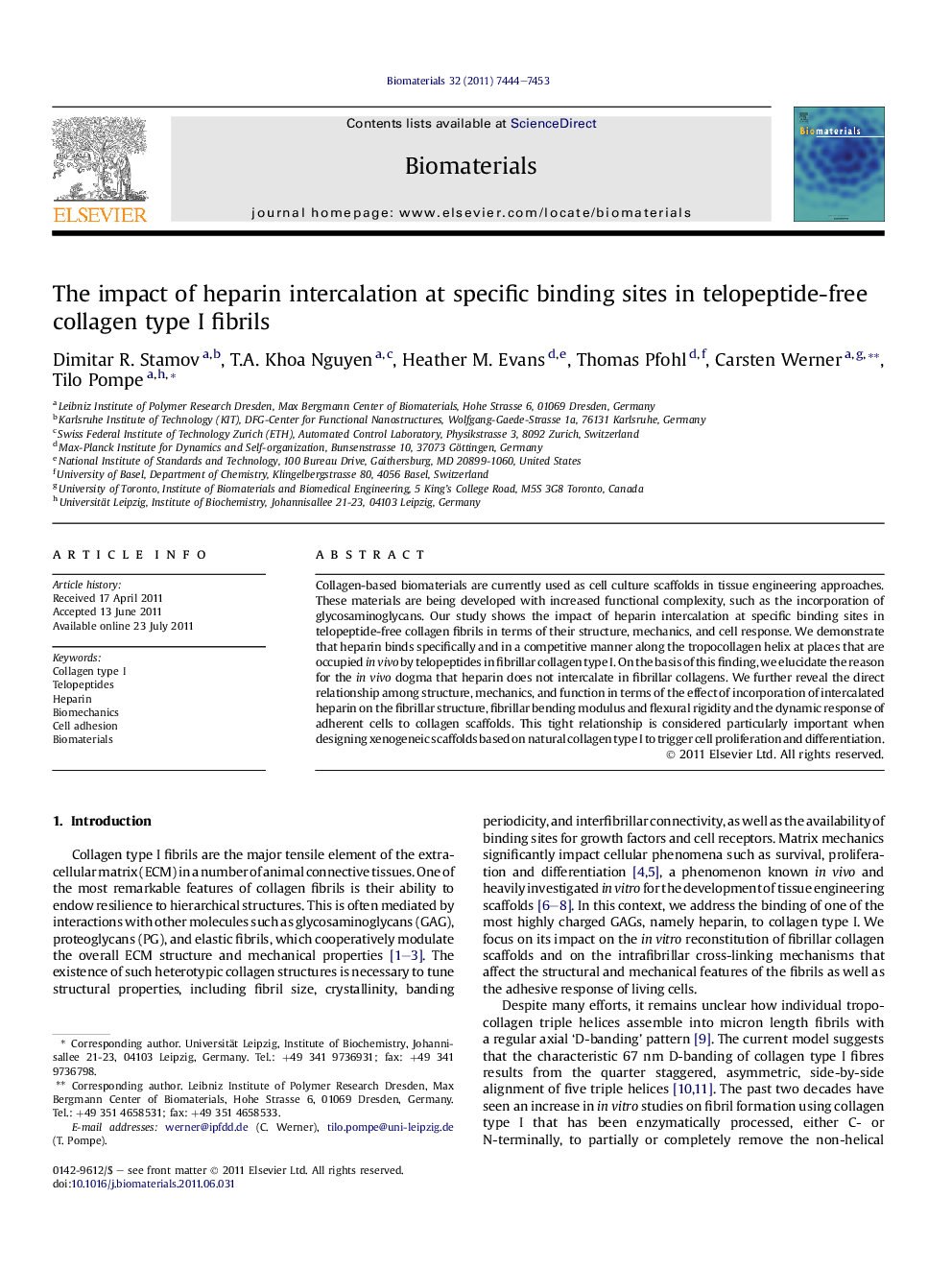| Article ID | Journal | Published Year | Pages | File Type |
|---|---|---|---|---|
| 10229722 | Biomaterials | 2011 | 10 Pages |
Abstract
Collagen-based biomaterials are currently used as cell culture scaffolds in tissue engineering approaches. These materials are being developed with increased functional complexity, such as the incorporation of glycosaminoglycans. Our study shows the impact of heparin intercalation at specific binding sites in telopeptide-free collagen fibrils in terms of their structure, mechanics, and cell response. We demonstrate that heparin binds specifically and in a competitive manner along the tropocollagen helix at places that are occupied in vivo by telopeptides in fibrillar collagen type I. On the basis of this finding, we elucidate the reason for the in vivo dogma that heparin does not intercalate in fibrillar collagens. We further reveal the direct relationship among structure, mechanics, and function in terms of the effect of incorporation of intercalated heparin on the fibrillar structure, fibrillar bending modulus and flexural rigidity and the dynamic response of adherent cells to collagen scaffolds. This tight relationship is considered particularly important when designing xenogeneic scaffolds based on natural collagen type I to trigger cell proliferation and differentiation.
Related Topics
Physical Sciences and Engineering
Chemical Engineering
Bioengineering
Authors
Dimitar R. Stamov, T.A. Khoa Nguyen, Heather M. Evans, Thomas Pfohl, Carsten Werner, Tilo Pompe,
